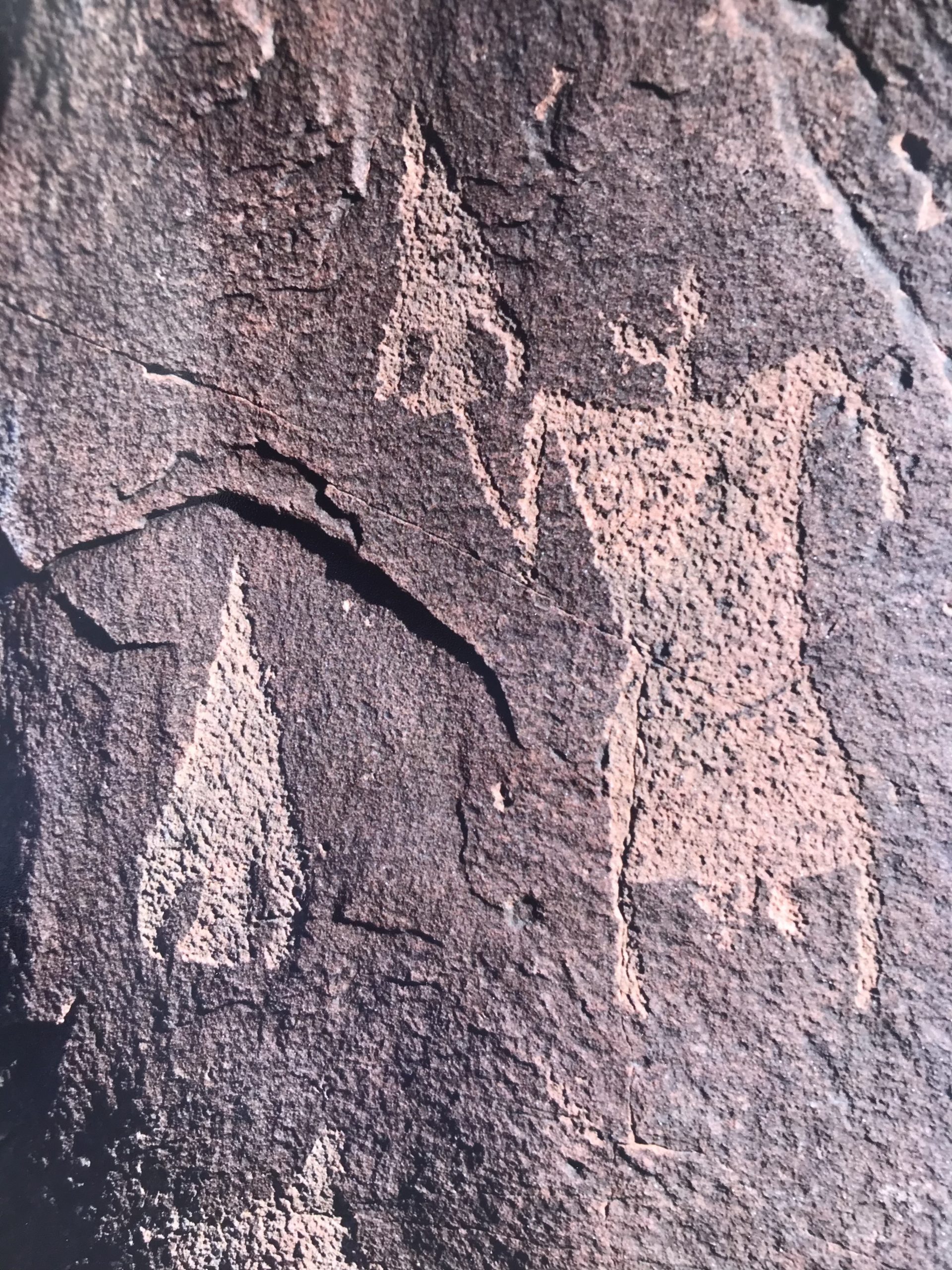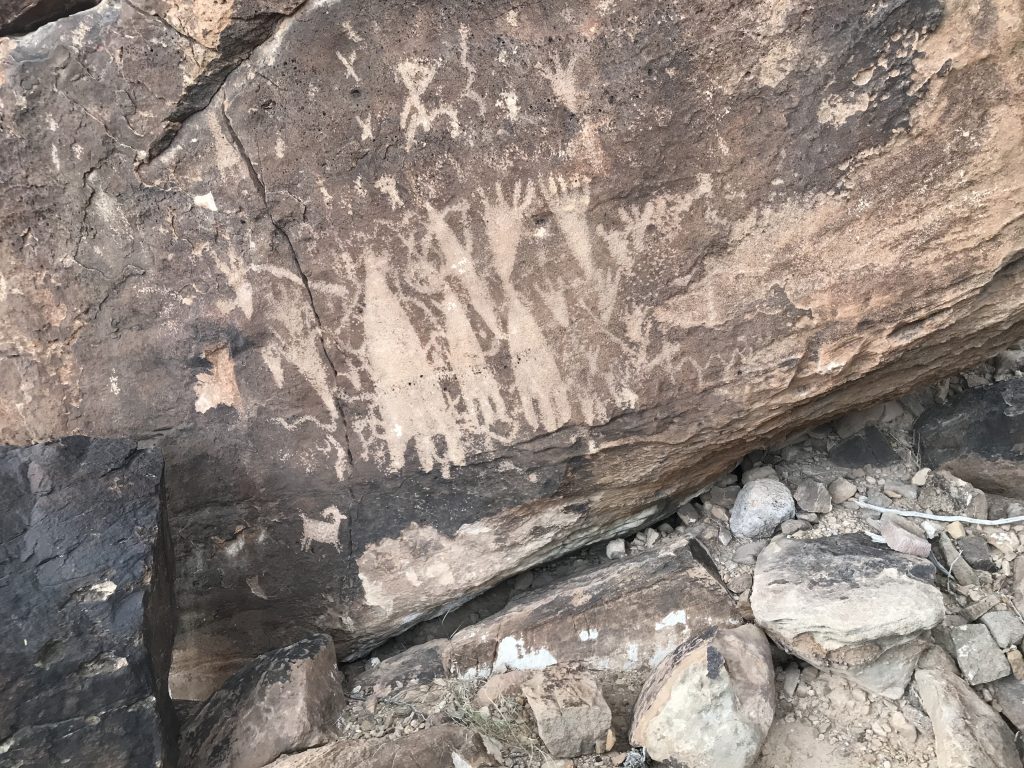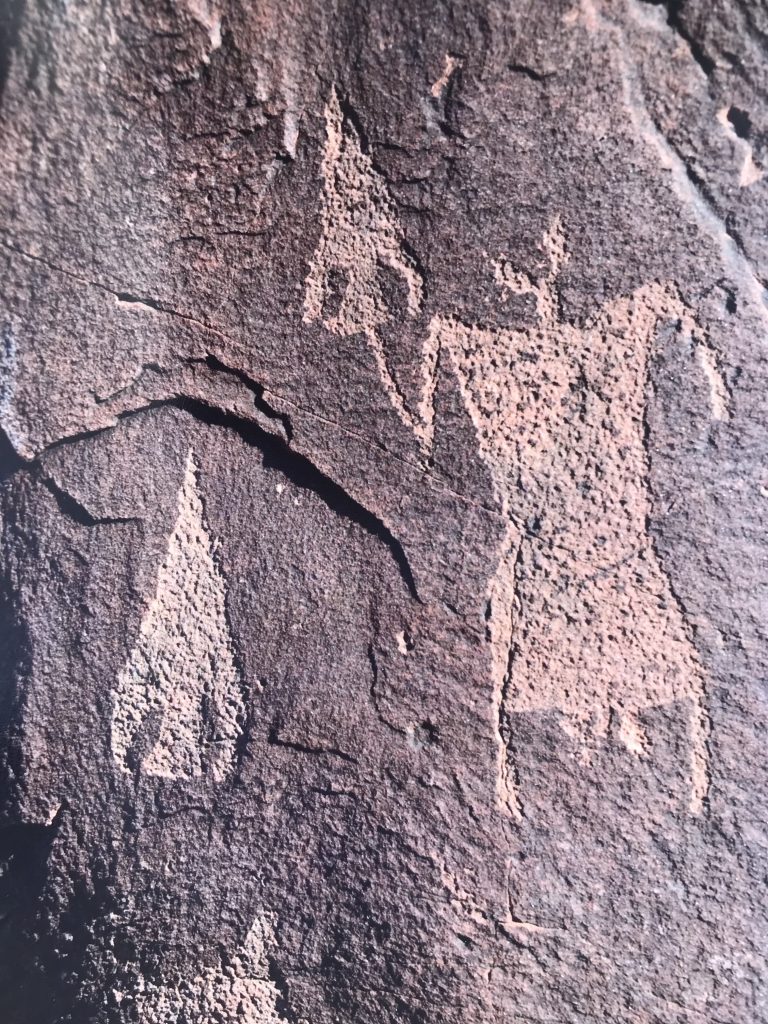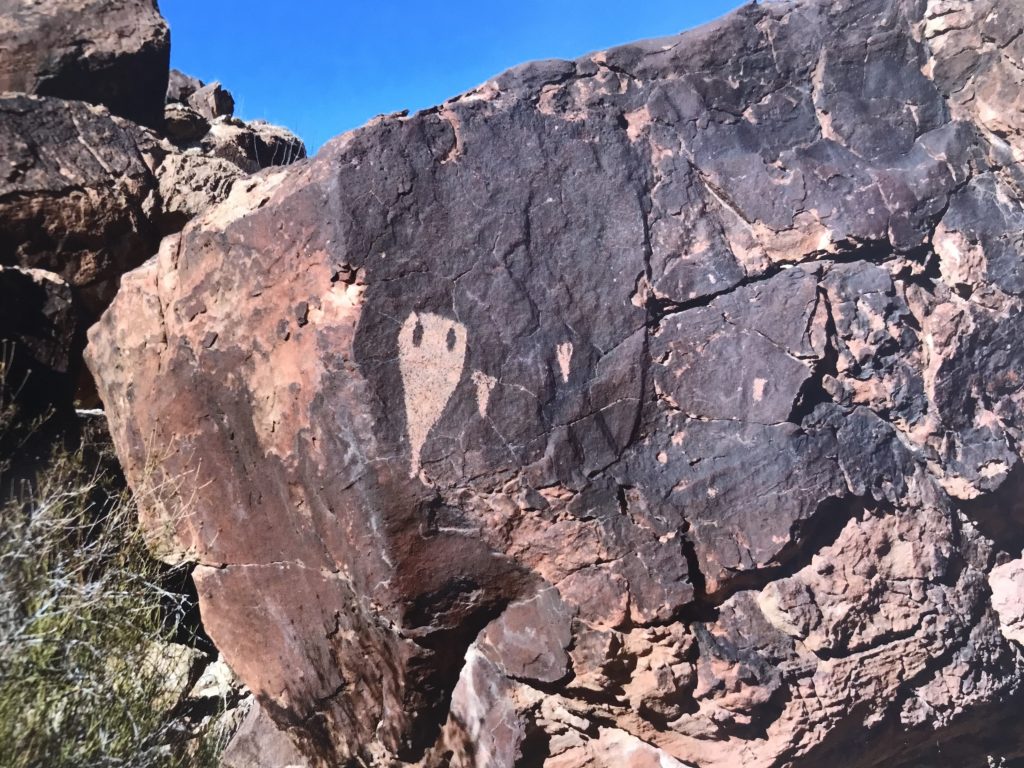
Explore Ancient Petroglyphs in Alamo Canyon, Ft. Hancock TX

On Saturday September 27 Rio Grande Trails and Tales and the El Paso Archaeological Society will lead a tour of the Rock Art Site at the west end of the Alamo Reservoir Dam No.1. Alamo Canyon was a prehistoric hunting ground for large game. The zoomorphic images depict big horned sheep, antelope, bear and deer. In comparison to other sites, no small game was recorded. In addition to the prey, tools, abstract patterns and figures are prevalent. Human figures represent hunters and shamanic figures. Shamen, or ceremonial leaders, are represented as horned figures. Some figures have been described as part human and part animal. One unusual subject is a unique type of projectile point that has been dated back beyond 2500 B.C. and as recently as 200 A.D. The images represent several periods of occupation and styles.
The sandstone walls of the canyon produced large blocks of stone which provided shelter for the indigenous people over many centuries. The inhabitants recorded images on the dark patinated stones by chipping and incising the rock walls and surfaces. This medium called petroglyphs is the most durable form of rock art. The buff colored images stand out in contrast to the dark rust colored stone. Habitation sites can be identified by food processing stone features for grinding and roasting vegetable material. Alamo Canyon has been designated a Rock Art District by the Texas Historical Commission.
The site is about 60 miles east of Downtown El Paso off Interstate 10. The last 15 miles are on good quality unpaved (dirt) county roads. To get to the meeting point, drive East on I-10 and take the Ft. Hancock exit. Turn right (south) and look for a parking lot on the left (east) between the gas station and the chile building. The lead vehicle from the Archaeological Society will be a white Ford pickup truck with a Texas flag. The group will leave Ft. Hancock at 10 am. and drive to the site. Plan to leave to Ft. Hancock by 8:30 and no later than 9:00.
From the parking area it is necessary to climb up a steep mountain slope in loose rock for about 30 – 40 yards. The site is about 100 yards long. For safety, heavy shoes or boots with hard soles are best. Soft canvas shoes and sandals are not recommended. Sturdy walking sticks or poles are recommended. Broom handles work well. Bring water and head cover.
For more information: The Artifact, Journal of the El Paso Archaeological Society, 1974, Fort Hancock Rock Art Site, by Kay Sutherland and Paul Steed. Field Guide to Rock Art: Symbols of the Greater Southwest, by Alex Patterson 1992.



